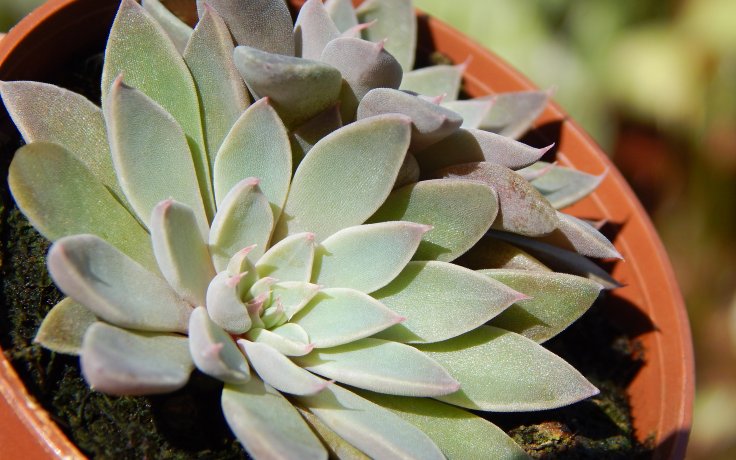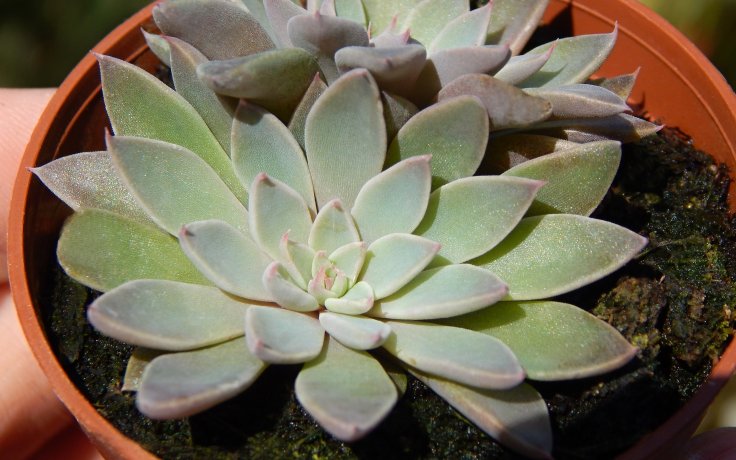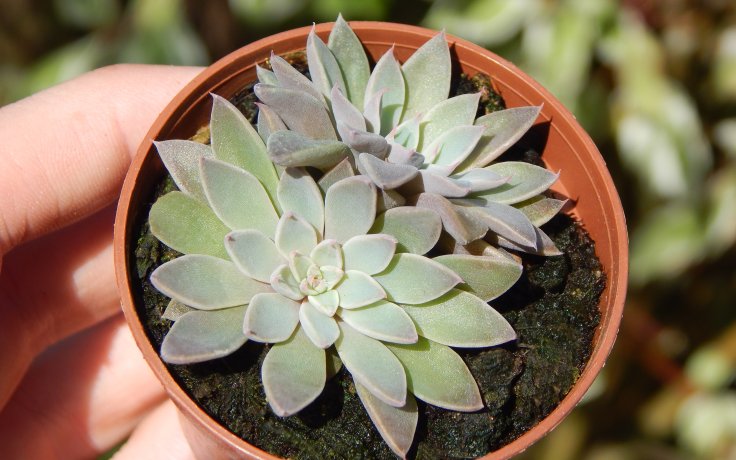- Home
- Succulents
- Graptopetalum
- Graptopetalum rusbyi





Graptopetalum rusbyi
Place in a sunny location, can tolerate partial shade.
Always water a few days after the substrate has dried out. In winter, limit watering.
Can tolerate -3,9 °C in the short term. However, the plant is not hardy.
In the wild, it grows on sheltered northern slopes and cliffs. Therefore, it does not like to be grown in overheated greenhouses.
The succulent Graptopetalum rusbyi is called San Francisco River Leatherpetal. The name refers to the San Francisco River and the genus Graptopetalum. In addition to the San Francisco region, it occurs naturally throughout Arizona or Mexico (specifically from the states of Chihuahua, Sonora and Sinaloa). It grows here on north-facing slopes and sheltered cliffs at elevations up to 1,600 m above sea level. It can also be found under names such as Cotyledon rusbyi, Dudleya rusbyi or Echeveria rusbyi.
The fleshy obovate to lanceolate leaves are pointed into a short but sharp spike. They commonly reach 5 cm long and 1.5 cm wide. They turn light green, reddish to purple and grow in dense rosettes. These consist of about 10 to 50 leaves and reach up to 10 cm in diameter. The rosettes bear short, upright stems and the succulent grows to a rather ground-hugging size.
White or greenish flowers appear in late spring. They are triangular in shape and bear 6-8 red stripes. They grow on upright stems that reach up to 18 cm and the flowers are denser and more conspicuous at the top.
Graptopetalum rusbyi does not particularly like hot and unventilated greenhouses. More open spaces are more suitable for them. It is not advisable to fertilise the plant. It is rather a small succulent that delights with its aesthetic rosettes.